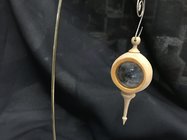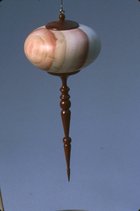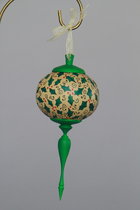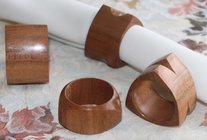What is a good set of traditional tools for finial work
Or it I buy separately what are some need tools for finial work
Thanks
Or it I buy separately what are some need tools for finial work
Thanks
Is it a regular 3/8 bowl gouge or one without a fluteWhen making finials, I do just about everything with a 3/8" spindle gouge. And a narrow parting tool.
I might use my 3/4" or 1" spindle roughing gouge or my 1/2" bowl gouge (bar size) to initially round square stock, but I can do that with the spindle gouge too.
Edit - oops, didn't notice this was in the ornamental group - we might be talking about different things. Sorry.
I use a swept-back grind, but the grind really isn't key for roughing. I have never tried a fluteless gouge.Is it a regular 3/8 bowl gouge or one without a flute
I have never heard of rose lathe what is the difference between it a regular lathe?I just don't know if turning finials on a rose engine or ornamental lathe is any different than on a "normal" lathe. Hence my edit/coment
Frank, I suggest you begin your education about rose engine lathes with the Ornamental Turning Book of Knowledge. There is a specific topic on rose engine lathes and a wealth of other information. Good luck.I have never heard of rose lathe what is the difference between it a regular lathe?
What is a good set of traditional tools for finial work
Or it I buy separately what are some need tools for finial work
Thanks
Not my choice for finials - the extra metal on the detail gouge makes the bevel too long.Thanks everyone
Sounds like the vote is 3/8 detail spindle gouge




Very cool thanksWhat I use for finials are: 3/8 spindle gouge - coves
1/2” skew
1/4 skew (round bar)
Not my choice for finials - the extra metal on the detail gouge makes the bevel too long.
Demo ornament all turning with a 3/8 spindle gouge. No sanding
View attachment 60623
Other spindle examples
View attachment 60625View attachment 60624View attachment 60626
Thanks for the helpThe biggest thing I learned was to get rid of the tailstock. Work in small segments from the tip and make cuts towards the headstock. At each segment, do your sanding before moving to the next and violate the rule and use a finger behind the finial for support especially as it gets thinner. Learning this method has really elevated my game on finials. I use nothing but a detail gouge unless I need to hog out a little wood...BUT cuts are always toward the headstock. I do have a small skew I made for some fine detail work as well.
That's a good idea. I wonder if I could get any use out of a 1/2 inch vortex tool. All I have laying around other than a 5/8.Speaking of Cindy Drozda, I always believed that her vortex tool was born from a spindle gouge that was sharpened past the flute and she didn't want to throw it away. That's what I would do... Well, will do next gouge I wear out.
Allen Batty had a detail tool, which I believe Cindy used as her inspiration. His was half round bar stock, and ground to a point, and a very shallow nose angle, like 20 or so degrees. The Sorby 'spindle master' tools were supposed to be an imitation of Allen's tool. Allen said, "They got it all wrong!". The Skewchigouge was another attempt to mimic the tool. I think Stewart has a version of the tool as well.
robo hippy
